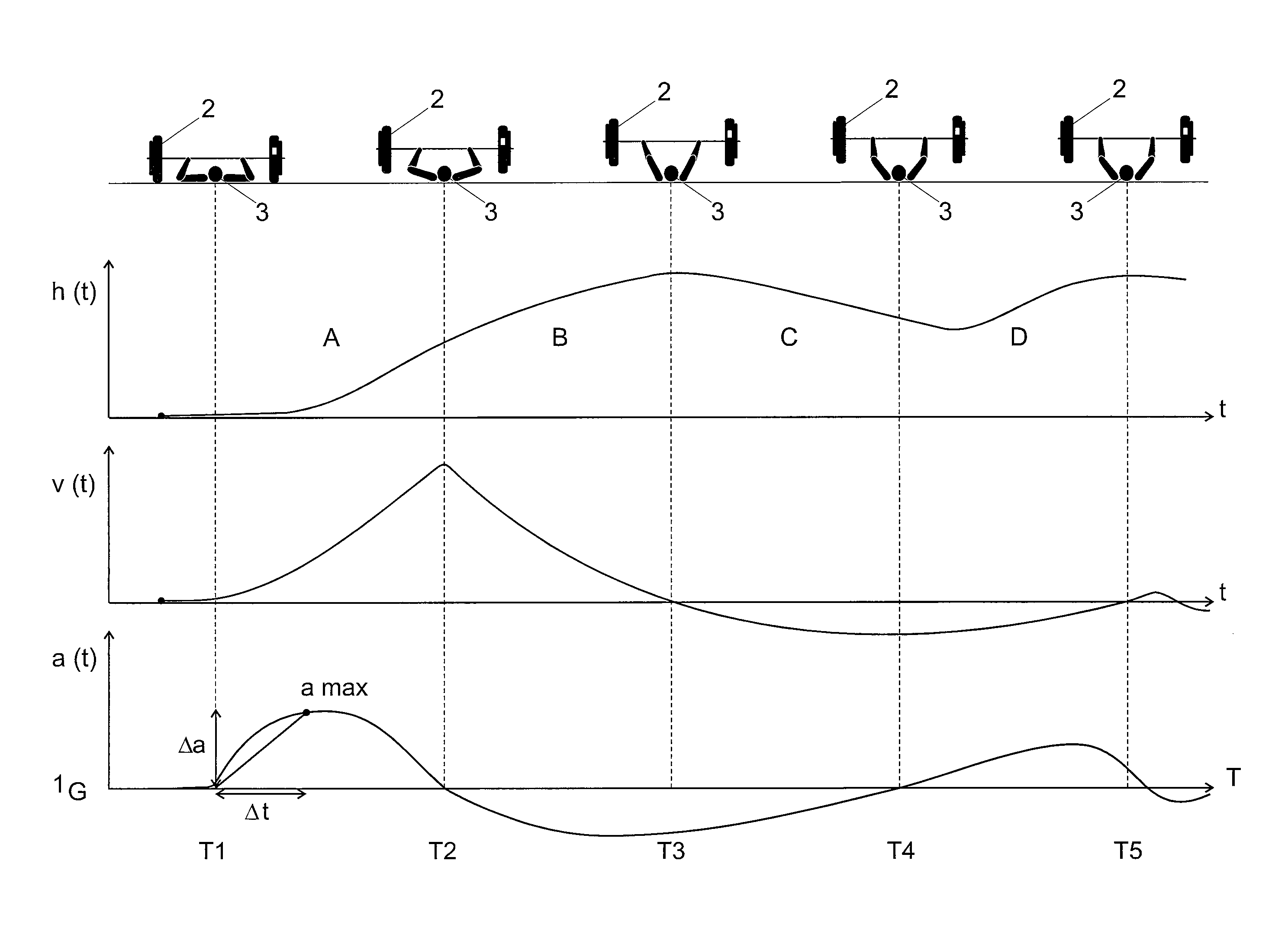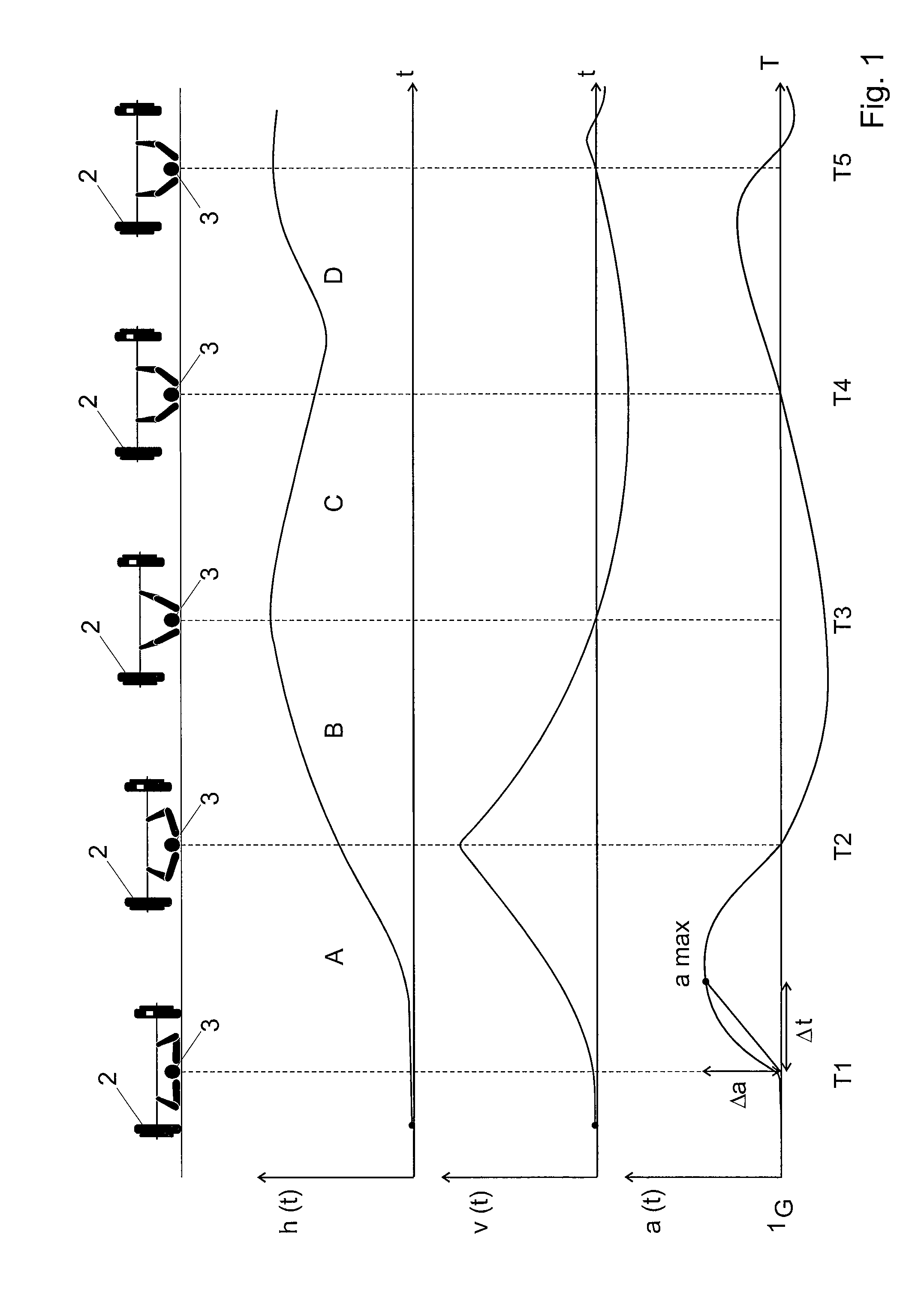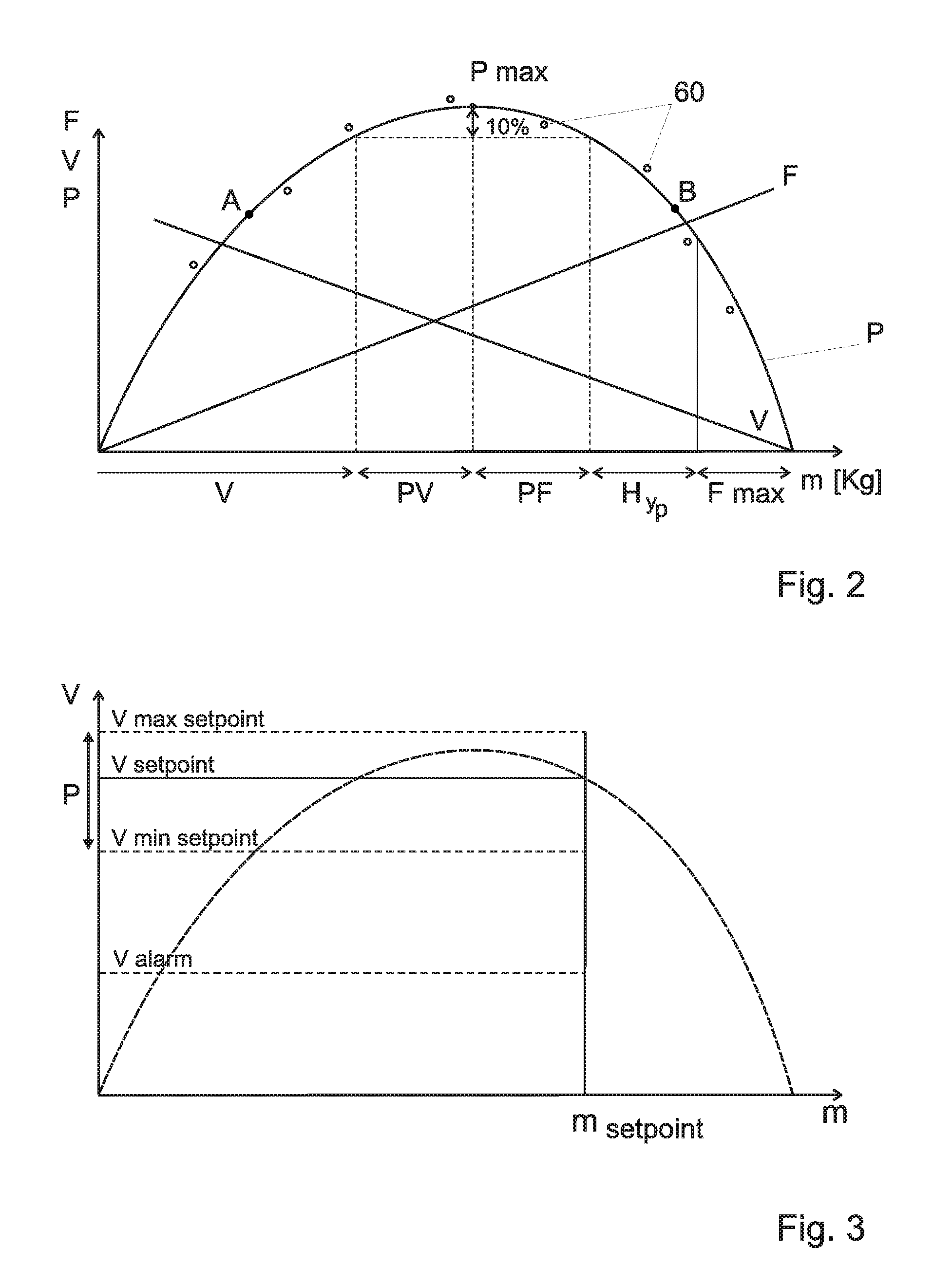Method and device enabling an athlete to determine and then control the rate of displacement of a mass
a technology of displacement rate and device, which is applied in the field of method and device enabling an athlete to determine and then control the displacement rate of a mass, can solve the problems of not allowing for example the maximum power of a muscle group of an athlete to be measured, and none of these devices allows basic physiological muscle parameters such as strength, speed or power of a muscle group to be obtained
- Summary
- Abstract
- Description
- Claims
- Application Information
AI Technical Summary
Benefits of technology
Problems solved by technology
Method used
Image
Examples
Embodiment Construction
[0030]FIG. 1 illustrates the evolution of different kinematic parameters during a load-lifting movement of the type “bench-press”. This movement, often used in muscle training, consists in lifting a load 2 with both arms, from a position lying on the back. The load is lifted as high as possible by combining an adduction of the shoulder and an extension of the elbow. The upper line of FIG. 1 illustrates five phases of the movement. The exercise starts at T1, in the initial position represented on the first image on the left of FIG. 1. The load is at its lowest point (h(t)=0), the elbows of the athlete 3 are bent.
[0031]During phase A, between the instants T1 and T2, the athlete 3 lifts the load whose speed v(t) and height h(t) increase constantly, as indicated on the corresponding graphs. The pushing force (proportional to the acceleration a(t)) exerted during this phase is at its maximum and the arms extend.
[0032]During phase B, between the instants T2 and T3, the pushing continues b...
PUM
 Login to View More
Login to View More Abstract
Description
Claims
Application Information
 Login to View More
Login to View More - R&D
- Intellectual Property
- Life Sciences
- Materials
- Tech Scout
- Unparalleled Data Quality
- Higher Quality Content
- 60% Fewer Hallucinations
Browse by: Latest US Patents, China's latest patents, Technical Efficacy Thesaurus, Application Domain, Technology Topic, Popular Technical Reports.
© 2025 PatSnap. All rights reserved.Legal|Privacy policy|Modern Slavery Act Transparency Statement|Sitemap|About US| Contact US: help@patsnap.com



